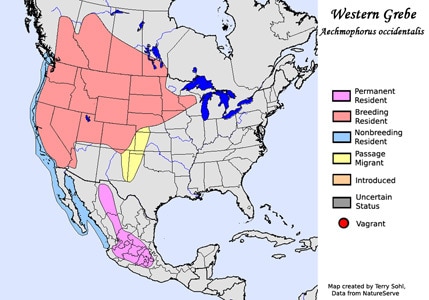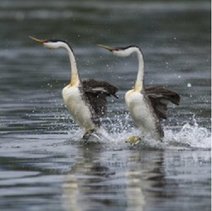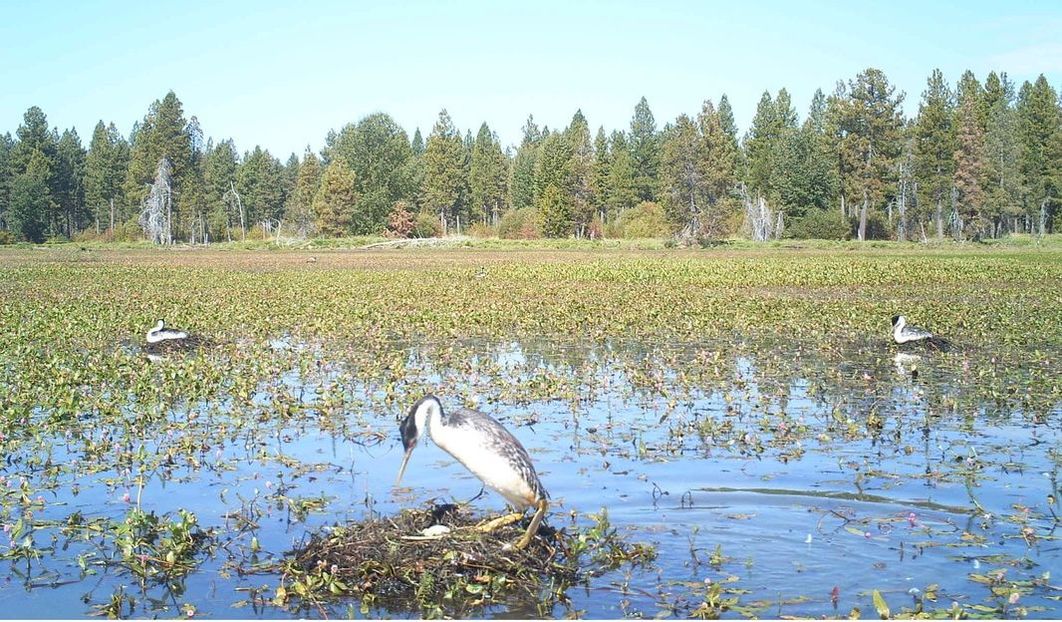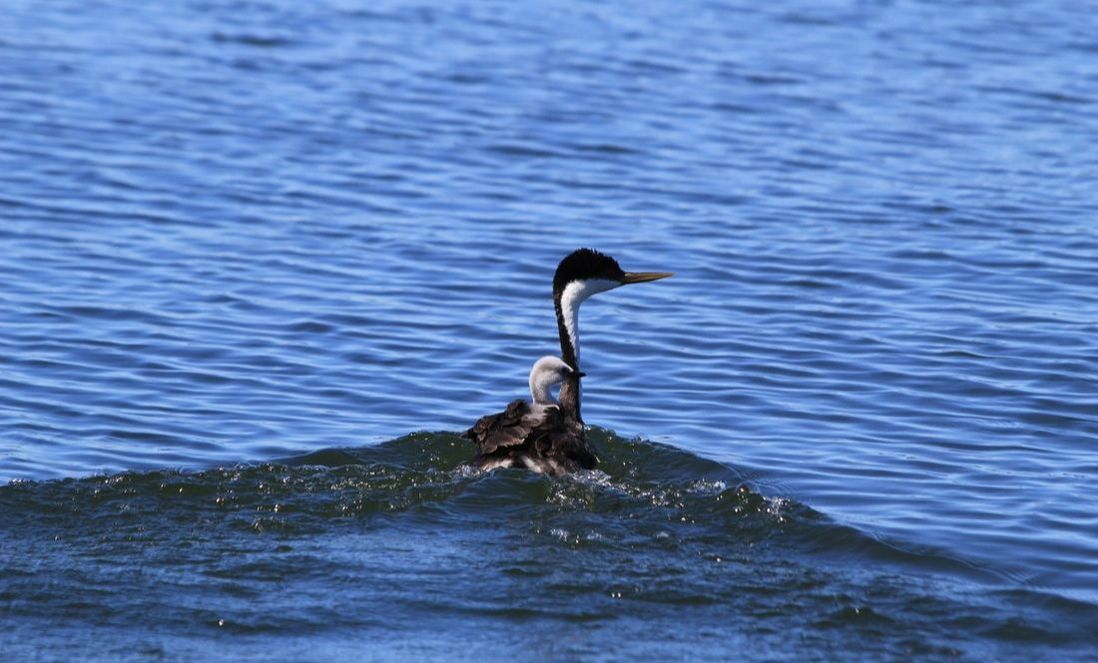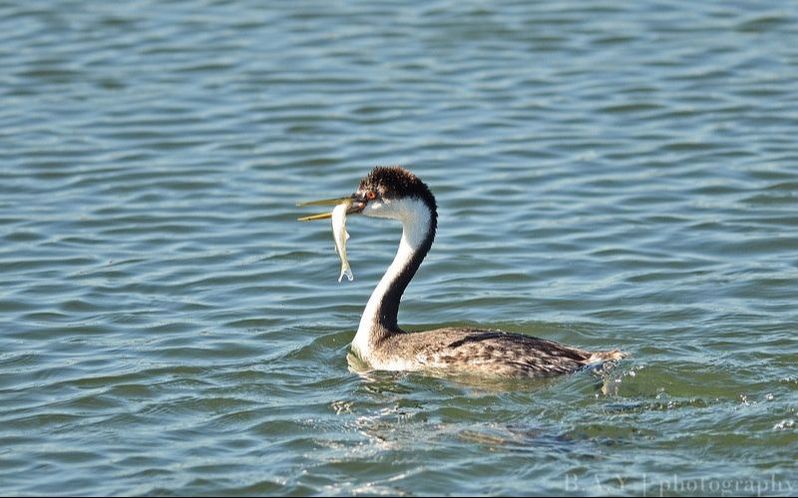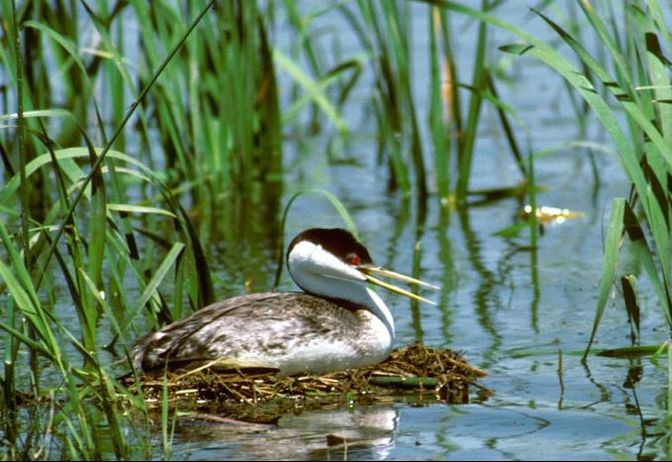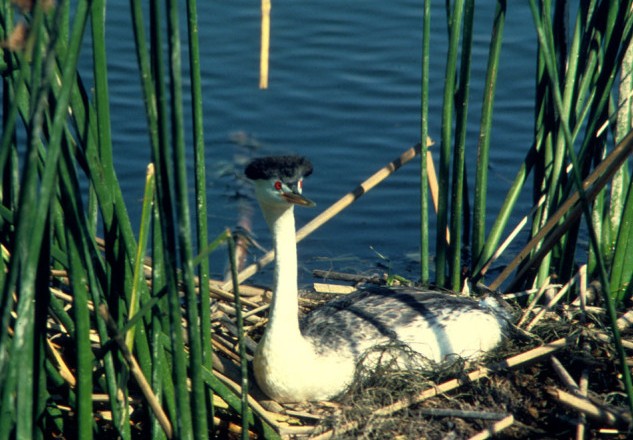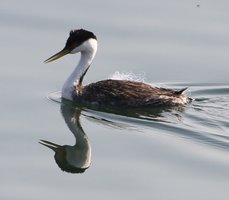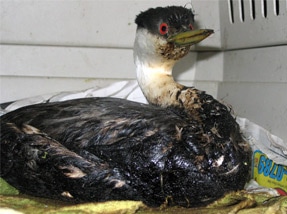Life History
Western grebe (Aechmophorus occidentalis) and Clark's grebe (A.clarkii)
Grebes are diving birds that have adapted to life in and on the water over millions of years. All grebes (there are five genera worldwide) have highly reduced wings (especially during nesting season when they molt flight feathers). They often congregate in rafts and nest in colonies.
Western grebe and Clark's grebe were once thought to be different color phases of the same species, and have only recently been determined to be different species of the same genus.
Grebes spend almost their whole lives on the water and because of their adaptations to swimming, can barely walk on land. Their legs are far at the back of the body and provide poor balance. Grebes are much more graceful, agile, fast, and at home on the water, as seen in the video below.
Western grebe and Clark's grebe were once thought to be different color phases of the same species, and have only recently been determined to be different species of the same genus.
Grebes spend almost their whole lives on the water and because of their adaptations to swimming, can barely walk on land. Their legs are far at the back of the body and provide poor balance. Grebes are much more graceful, agile, fast, and at home on the water, as seen in the video below.
MigrationGrebes migrate from coastal waters in the spring to inland lakes for nesting. Lakes here in the Intermountain West support a large percentage of nesting grebes, and therefore were chosen for surveys to improve breeding conditions. Fall migration occurs sometime between October and December when grebes fly back to ocean habitats.
|
|
NestingGrebes build floating nests connected to emergent or submerged vegetation. These nests can be vulnerable, but are a compromise in adaptation. The nests can be stranded on dry land as water levels decline through the summer, especially on those lakes managed for power production or down stream rights.
|
YoungGrebe adults "back brood" young as soon as they hatch. Once young have hatched they all climb on parents back and head to open water, never returning to the nest. There they spend the remaining part of summer being fed by parents and learning to swim and dive, until it is time to migrate to the coast.
|
DietGrebes are piscivorous, or fish eating, and dive in pursuit of prey in both salt and fresh water. Studies have shown Western and Clark's grebes are able to consume up to a pound of fish each day. When you consider the size of the fish, most often minnows about 2-4 inches long, this is quite a large number of fish each day.
|
Species Differences
Western and Clark's grebes are so similar they were once thought to be the same species. They intermix on both winter and summer grounds, often nesting together in colonies. Both species are bi-colored; gray or dark brown to black backs with white under sides; have red eyes; and have similar sounding calls. The differences can be subtle, but close inspection with good optics reveals the differences.
Western GrebesWestern grebes dark portion up the back of the neck to the head comes below the red eye. The bill is a dull yellow-green to grayish. When compared with Clark's grebes, Westerns are darker overall and usually have two syllables in their call, with a relatively harsh and high pitch "cree-creet". These calls carry well across large bodies of water.
|
Clark's GrebesClark's grebes dark portion going up the back of the neck and head comes above eye, leaving white feathers around the red eye. They also have a bright yellow-orange bill. Clark's grebes appear lighter in overall color, although individual color variations and posture can be deceiving; they also typically have only one high pitch "creet" in their call.
|
